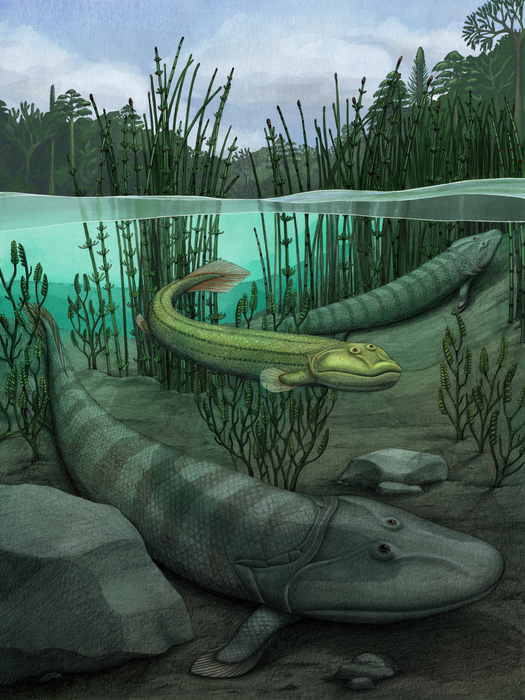SciNewsのTwitterイラスト検索結果。 10 件
The Permian ray-finned fish #Brachydegma is long-known, but new data from CT scans gave paleo nerds a better idea of its affinities and suspensorium* anatomy this week, e.g. showing a joint b/w the articular and symplectic. #FossilFriday #SciNews
ICYMI: The new fish relative #Qikiqtania debuted this week, and despite being cousin to tetrapods, was thoroughly aquatic. You could say it was a bit of a backslider. https://t.co/PWsckCtJv0
🎨by @AlexBoersma_Art #FossilFriday #SciNews
A new study by a China/UK/US group looks at animal traces (ichnofossils) on seafloors to see look at recovery after Earth's largest mass extinction: https://t.co/tTuiuoQsVu #OpenAcess #SciNews #FossilFriday
Meet Strophodus rebecae, a new shark from the Cretaceous of Colombia. Although so far only teeth have been found, they're distinctive enough to place in the extinct family †Hybodontidae. https://t.co/M0NDDqIw4P #SciNews #FossilFriday 🎨 by Jorge Blanco
This is the CT-scanned skull of #Navajosphenodon sani, a 190 million-year-old tuatara relative from Arizona, USA. It shows that many tuatara features were already present at a time when dinosaurs were just hitting their stride. #FossilFriday #SciNews
On the left: a macuahuitl. On the right, the newly described dinosaur #Stegouros elengassen, published this week in @Nature https://t.co/mpom5FvPA4 (paywall) #SciNews #FossilFriday
Out earlier this week, a #pterosaur specimen shows evidence of a muscle bridging the junction between the body and torso, which is interpreted as a "fairing." You've got to love this illustration. #SciNews #FossilFriday
The recently described #Taytalura alcoberi is on the lineage leading to both rhynchocephalians and lizards/snakes. This beautifully preserved skull analyzed by CT helps show when traits unique to each evolved. https://t.co/NJNTpI5nH9 #SciNews #FossilFriday
SMIL-ing through the pain? A specimen of the Triassic phytosaur #Smilosuchus shows evidence of extensive bone fractures and healing consistent with #osteomyelitis. In this diagram, all the indicated bones had some kind of fracture! #SciNews #FossilFriday
Want to know where your teeth come from? Sharks can't tell you; they're doing their own weird thing. Analysis in a phylogenetic context shows that their conveyor belt teeth are pretty specialized. 🎨 by @MesozoicMuse #FossilFriday #SciNews https://t.co/L0RCm5Wo9P











